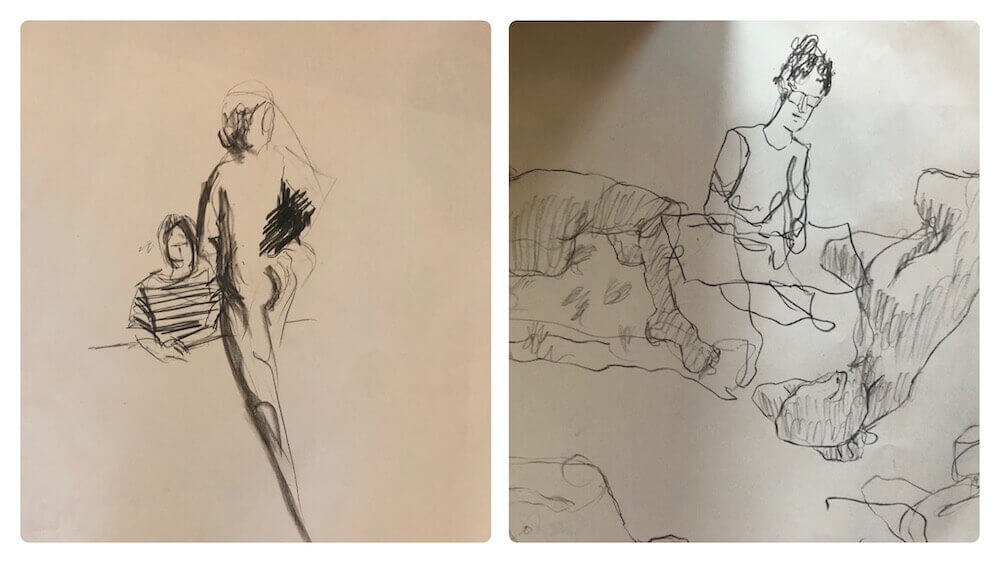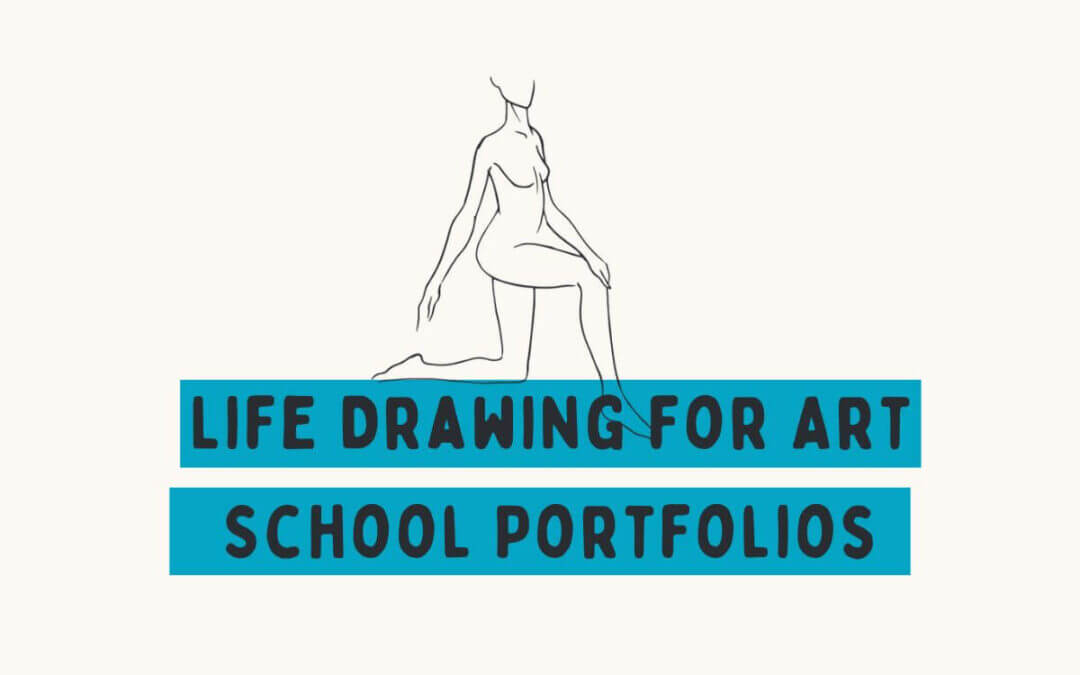How to Get Life Drawing in Art school portfolios RIGHT!
Whether you are taking a Foundation Course to build up your portfolio – or preparing your Art School portfolio on your own, you will spend a lot of time drawing figures from life.
But it’s not enough just to have life drawings.
The information on this page will help you get your life drawing in your art school portfolio right.
Life Drawing in Art School Portfolios
Life drawing is important in an art school portfolio because it’s traditional and difficult.
As well as showcasing talent, life drawing exposes weaknesses.
Life drawing separates the draughtspeople who can copy well, from those who can draw.
In terms of pure admin, this makes it easy for an art school selection committee to compare and assess applicants quickly.
Life drawing is prioritised in assessing portfolios because in many ways it’s a determiner of whether you will be able to draw anything well.
Most Art Schools believe that drawing competencies translate into every subject in art school.
You won’t pass the first year without them.
It’s unusual to get offered a place at a UK art school if your life drawing skills are not up to scratch.
You Don’t Need to be Alone
Don’t stress if you are preparing your art college portfolio alone, or if you are an international art school applicant.
We have a handy guide for you.
Sign up below to access our 20 Life Drawing Mistakes to Avoid pdf.
It’s free.
We know it’s not a ‘level playing field‘ for UK art school applicants (there are not the same opportunities for all candidates).
We want to help you get into your UK art school!
Portfolio Stars
The single best way to improve your odds of getting into art school is to GET HELP preparing your portfolio.
The right coach can help you develop your ideas, showcase the right skills and keep you on track.
Whenever you need a boost, take our 1 hr portfolio consultation.

#01 Art Schools are not Looking for Perfection.
Life drawing shows how YOU draw. In a room full of artists – everyone will have a different result, a different style.
Life drawing captures this uniqueness unlike anything else, for good and for bad.
Sometimes we can be too invested in our drawings to know if they are successful or not. Particularly, if you have low self-esteem, you may not realise the merit in any of your work, so do get help and advice about how to develop your drawing skills.
A big part of good life drawing is loving doing it.
How can you approach it with a positive mindset?
Life Drawing Tip
Are you testing different ways of drawing eg: (scale, and materials), or do all your drawings look a bit the same?
#02 Life Drawing in Art School Portfolios Don’t Need to Look Finished
Be aware that it’s easy to let an underlying structural mistake negate the merit of a whole drawing. There’s just no point having a beautifully rendered arm – if it’s in the wrong place.
It’s ok to redraw that arm in a new place and work out your mistakes visibly.
In some ways, life drawing is always going to be imperfect.
Part of life drawing is how you deal with problems like the model has moved, or the pose looks awkward from your position.

#03 Don’t Seek Perfection
It is ok to get bits wrong.
Art schools know it takes years of practice with a model to build accuracy and style.
They will be looking for a willingness to correct errors over a perfect bit of shading.
#04 Demonstrate Progress
It is not ok to keep repeating the same mistakes throughout the life drawing in your portfolio.
Watch out for oversized heads, missing hands or other recurring problems.
(This is another way getting a coach/tutor is invaluable).
Life drawing shows portfolio examiners how well you look and see, and if you understand composition on a page.
Are you drawing what you expect to see, or are you drawing what you actually see?
Bonus Tip:
If you can’t access a drawing class, ensure you show someone your drawings regularly and get feedback on ways to improve.
#05 Vary Drawing Speeds
Lastly, Art Schools want to see you can speed up and sketch rapidly, as well as slow down, measure, and look closely when required.
Both speeds will be important during your art school career.
The Debate: Should You Redraw?
One of our artist-English coaches Barry Scott and I took the same Art School Foundation year in Dundee (but at different times).
In a recent chat, we discussed the way one tutor was famous for heavily overdrawing student work.
At the time, it felt like our hard work was being ruined.
The tutor circled the class and we’d hold our breath in case he stopped at our bench and reached for our pencils.
IIt’s tough when it happens, but putting lots of hard work into a structurally incorrect drawing is pretty useless.
In hindsight, being shown your mistakes in this way is priceless.
It’s unusual to get offered a place at a UK art school if your life drawing skills are not up to scratch.
Life Drawing for Art School Portfolios
It’s not enough to just have life drawings in your art school portfolio, you need to demonstrate a willingness to correct errors, relook, and redraw.
It is hard to do this alone. I hope this blog helps.
Get help and advice at different stages of your portfolio preparation, including for your life drawing.
Further Information
I share everything you need in How to Start Your Life Drawing Class.
Or for your partner/friend, this blog explains Why People Life Draw.
Read this if you have No Opportunity to Life Draw for Your Art School Portfolio.



Recent Comments